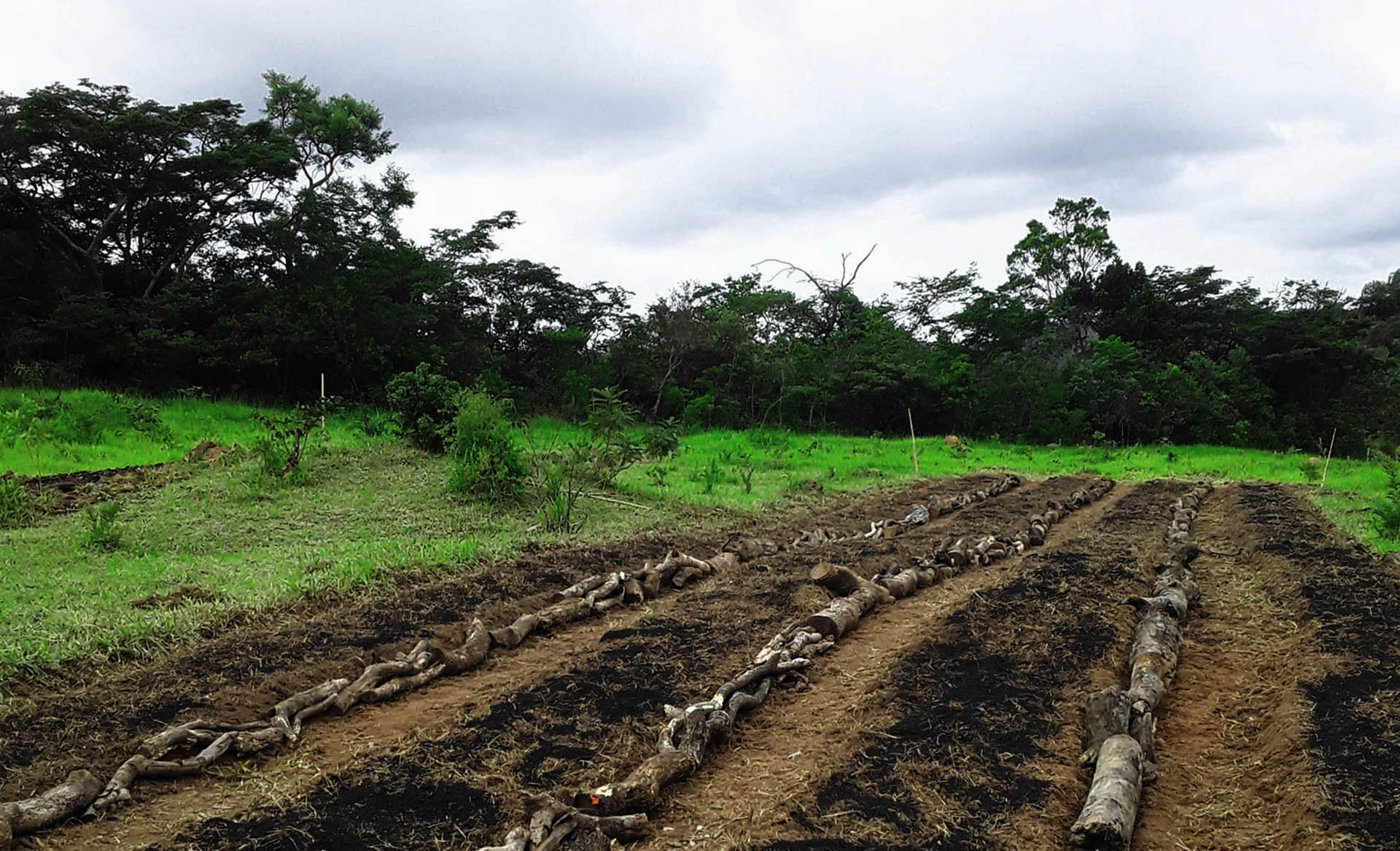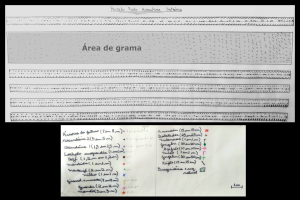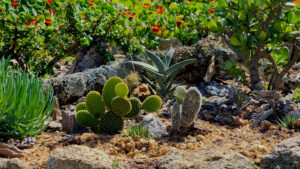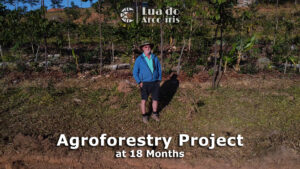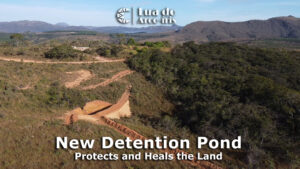- Syntrophic Farming Pilot Project
- Syntropic Farming Two Month Update
- Agroforestry Project 18 Month Update
Step 1: Research and Planning
The Lua do Arco-íris team has been looking forward to a new pilot project. We will use a small area in our pasture field as the base for our first Syntropic Farming area.
Our two agriculture experts Laura Araujo and Sam Motta researched Syntropic Farming methods and then attended a Syntropic Agroforestry Systems course. This 3 day course was hosted by Sítio Semente near Brasilia (https://www.sitiosemente.com).
Planning the Project
Using their learning, Laura and Sam began developing ideas and lists of plants for our Syntropic Farming pilot project. Along with our intern Fernanda Rocha, they created a detailed design plan and organized the list of materials and plants to get this project started.
Preparing the Amendments
Below we can see photos of some inputs that were used to prepare the soil for planting. These inputs include manure, charcoal, leaves from the forest, mulch taken from the area itself, and wood logs (gold from the syntropic forest!). By mixing the changes with some native soil, we’ll start creating living soil for the new forest.
What is Syntropic Farming?
Ernst Götsch is considered one of founders of Syntropic Farming. This is a concept that he developed and spent years refining here in Brazil.
“When farmers understand it, they create biodiverse ecosystems that offer each plant a life bubble, with no need of poison and fertilizer.
In degraded areas, recovery is accelerated by depositing organic matter in the soil. It is common to see Götsch with a bowie knife in his hands, pruning branches that will decompose, developing fungi and bacteria that help to fix nutrients such as nitrogen in the soil.
Seedlings aid in the planting of crops. As they grow, they give shade and help restore the soil’s fertility. As soon as two months after planting, the farmer can begin harvesting vegetables and, then, pineapples, corn, manioc and vegetables, generating income to invest in the recovery of the area and in new crops.“
Inez de Oliveira, “Ernst Götsch: The creator of the real green revolution” Believe.Earth, Accessed December 12, 2021. https://believe.earth/en/ernst-gotsch-the-creator-of-the-real-green-revolution/

